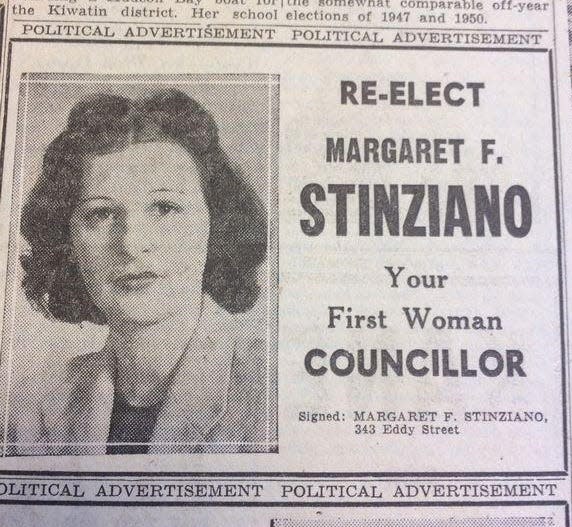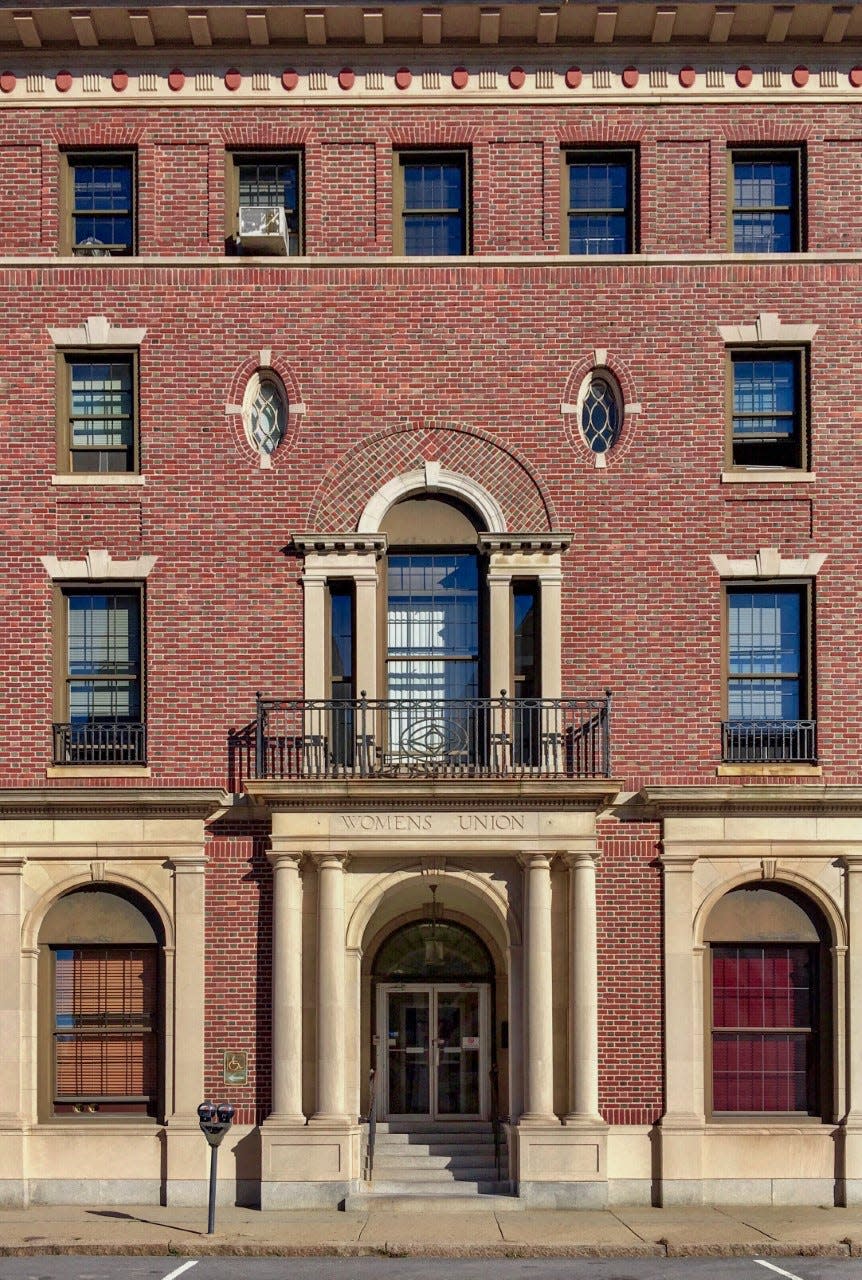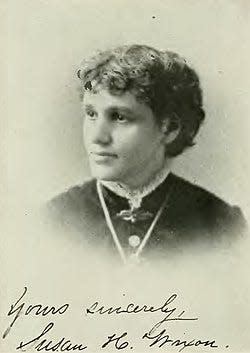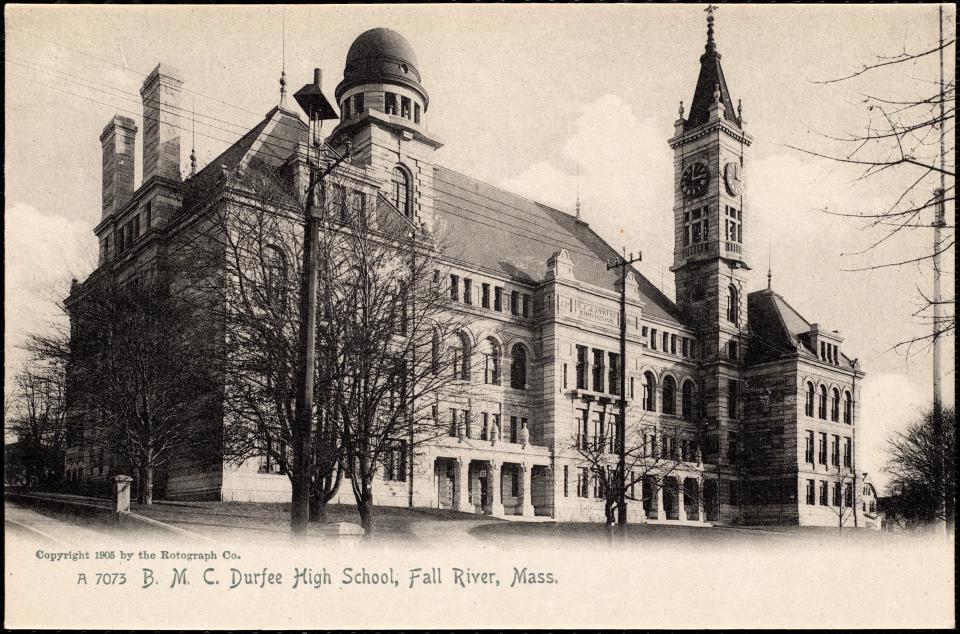Women's History Month: 5 women who had a major influence on Greater Fall River
Women have shaped the culture and landscape of Greater Fall River in innumerable ways, though not often given the dignity and respect they deserve.
Women’s History Month gives us an opportunity to correct that. Formally recognized for March since 1987, the month is a time to look at the remarkable lives and accomplishments of women throughout history.
Greater Fall River still has room to improve in terms of representation — the city has never elected a female mayor in 170 years, for instance. But political power is only one way to make change. Here are five women who have had an outsized influence on our history:
Stylin: NBA superstar Lebron James and 8 other celebrities with a taste for Fall River fashion

Margaret Stinziano
Fall River's quest to have government reflect the population it represents begins with Margaret Stinziano, the city’s first female city councilor. Stinziano grew up in the Italian neighborhood around Bedford Street’s Columbus Park (where today you’ll find Stinziano Street, though not named for her). She graduated from Durfee High in 1940 and attended the Boston Conservatory of Music, now part of Berklee. Stinziano was a singer, and in the years after World War II she worked at Fall River’s theaters in the thriving downtown, including the Durfee and the Embassy. In 1949, at 26 years old, Stinziano decided to give more to her community and made a bid for local government, running for City Council — and her election made Fall River history. Her second term was her last, but she paved the way for every woman to have a voice in city government.

Maude Darling Parlin
Lots of people can claim to have made their mark on the city — Maude Darling Parlin’s mark still stands. Born to a family of architects in 1884, she attended B.M.C. Durfee High School and went on to MIT, where she was the only woman in her graduating class of 250 students in 1907. She became the city’s first female architect, designing hundreds of homes and working on the Eagle Restaurant building, the Baptist Temple, the Sullivan Building, the YMCA on North Main Street, the Fall River Co-operative Bank building on Bedford Street, the Women’s Union on Rock Street, Temple Beth-El, and more. Sadly, the former Rialto, Capitol, Bijou, Strand, Park and Empire theaters — also her handiwork — are no longer with us. But many of her stately buildings from Fall River's golden age still stand today.
Helping hands: USA TODAY's Women of the Year share their best advice

Susan Wixon
Born in the 1840s in Dennis on Cape Cod, Susan Helen Wixon butted heads with authority at a young age — especially when it came to religion. Wixon was a freethinker, someone who held that people's beliefs should not be based on dogma, but on science. At age 13, Wixon began serving as a teacher in the Dennis school district. Wixon eventually relocated to Fall River, where she lived with her older sister Bethia in a house at 413 High St. In 1873, Wixon was elected a member of the School Committee and held the job for three years while teaching and writing. In 1890, she was re-elected and held a seat until her retirement in 1910. Outside of those duties, she was on the editorial board of The Truth Seeker, a freethought magazine still published today. She wrote poetry and texts on ethics, penned a poem on feminism called “When Womanhood Awakes” that she read at the 1890 national conference of the Woman's National Liberal Union in Washington D.C., lectured on morals, logic and education, and was dedicated to the advancement of science. She also lobbied to improve working conditions for women. Wixon died in 1912, and two years later the city honored her by naming a school after her — the former Wixon School on Hamlet Street.

Mary Brayton Durfee Young
Fall River’s “lady bountiful,” Mary Brayton Durfee Young was born in 1814 and rose to become one of Fall River’s most influential women with a legacy that lingers today. In 1842, the teacher married Maj. Bradford Durfee, then the wealthiest man in Fall River with a fortune based upon the textile mills. She had one son in June the next year — a happy occasion that soon turned tragic, when less than a month later the new husband and father died due to “overexertion” fighting the Great Fire of 1843. She inherited that vast fortune, which was added to a few years later when she remarried Jeremiah S. Young, a minister and textile manufacturer from Lawrence. She became a philanthropist, described by the Boston Globe at the time as known for “her many and generous deeds of charity, few of which have come to public notice" due to her modesty. One that did: in 1887, she donated to the city the land between Rock, Cherry, High and Locust streets and a completely built and furnished new high school — on condition that it be named for her son, who died at age 29: B.M.C. Durfee.
Joan Menard
Joan Menard devoted decades of her life to government service. After years as an educator in Somerset, she decided, almost on a whim, to enter politics. She was the president of the League of Women Voters, and decided to make a run for state representative in 1979. Her campaign saw her knock on every door in the 5th Bristol District, and it paid off, electing her to office by just over 100 votes. She remained in the House for 20 years until she moved to the other chamber — she was elected to the state Senate in 2000 and remained until her retirement in 2010. In 1985, she was the first woman elected to be assistant majority whip; she logged another first in 1993, when she was the first woman elected as the head of the Massachusetts Democratic Party. She returned to education after her stint in government, helping head the Workforce Education Institute at Bristol Community College, and retired in 2014.
Dan Medeiros can be reached at dmedeiros@heraldnews.com. Support local journalism by purchasing a digital or print subscription to The Herald News today.
This article originally appeared on The Herald News: Women's History Month: 5 women who influenced Greater Fall River

